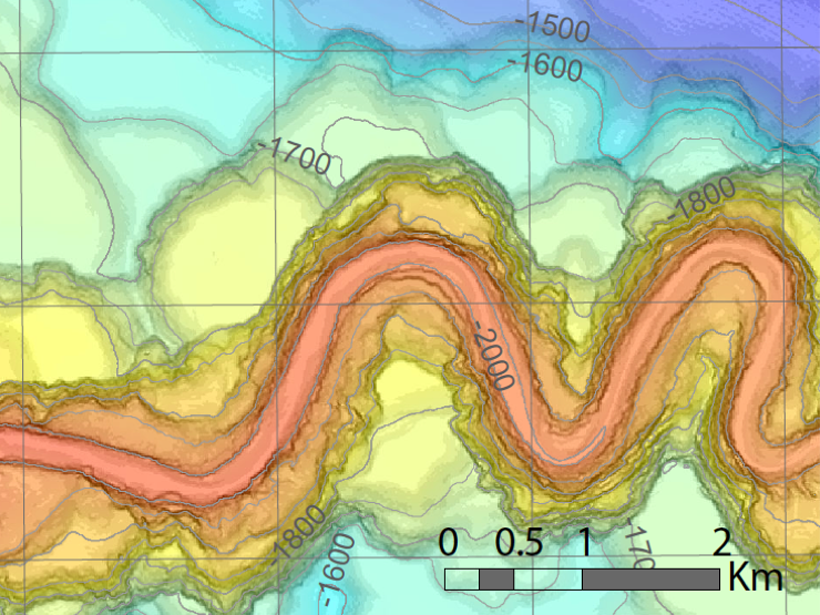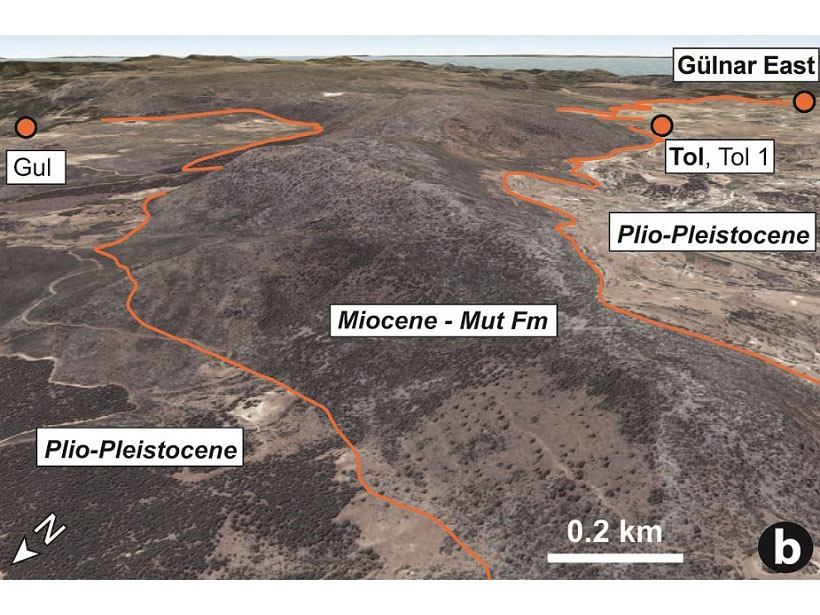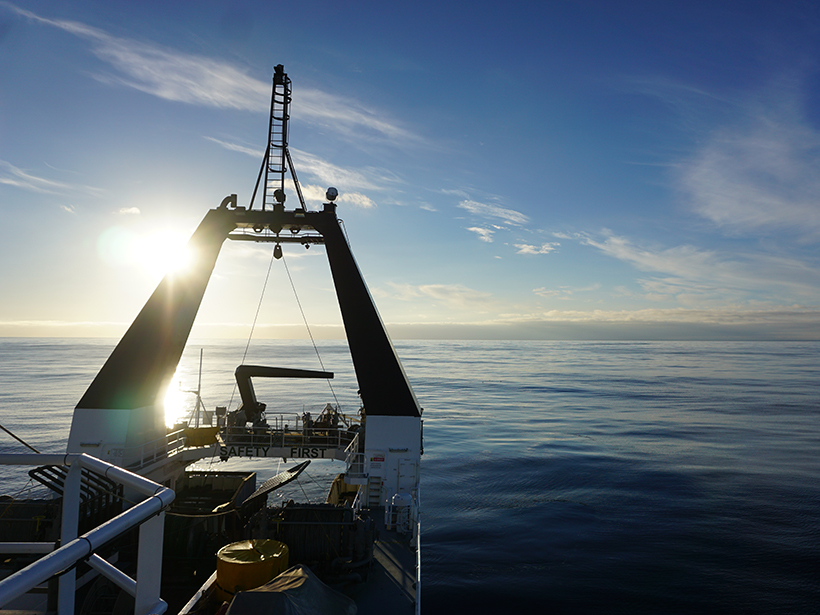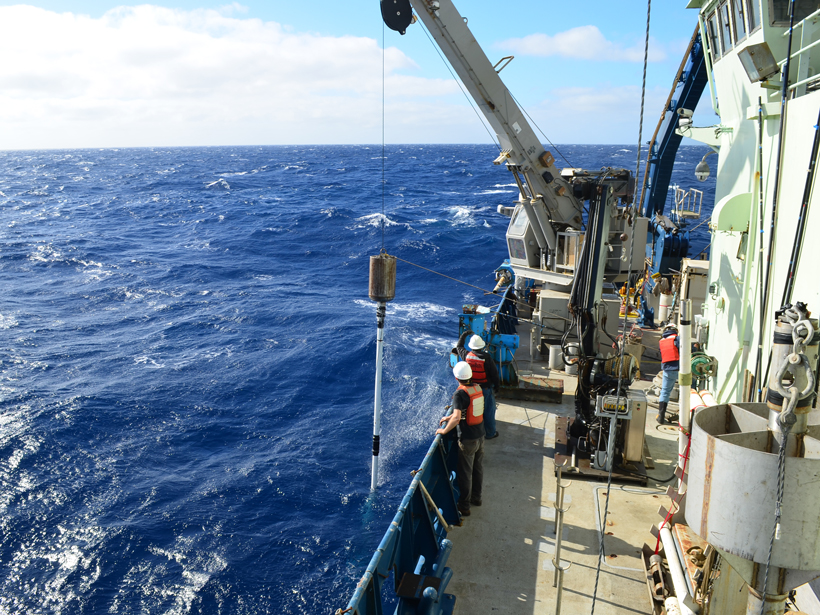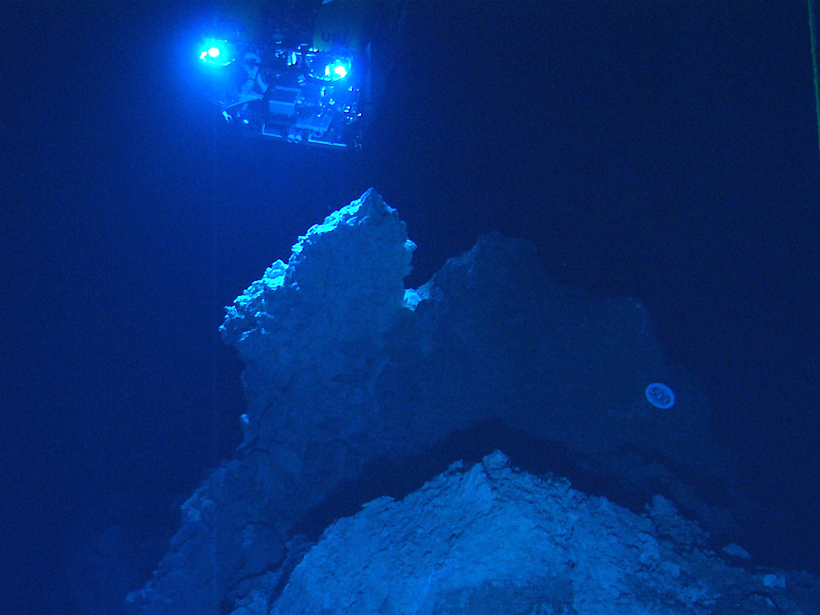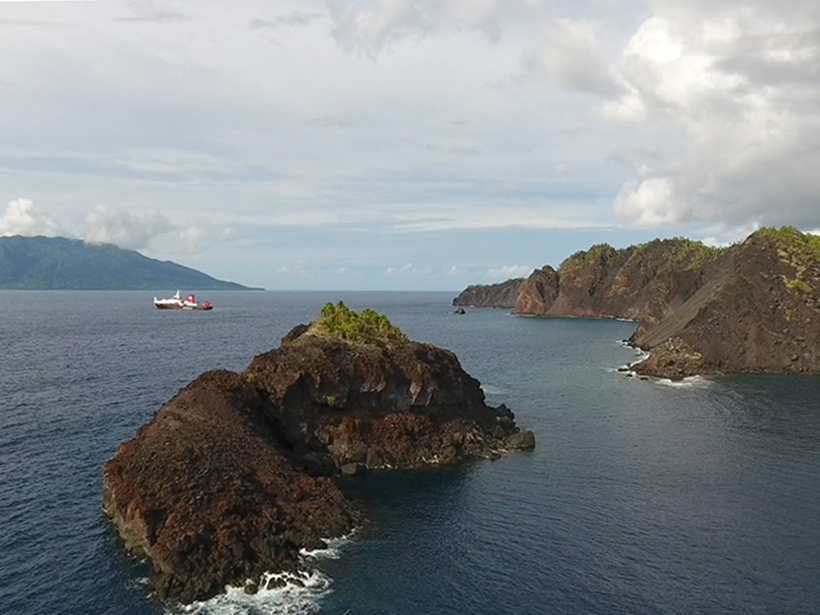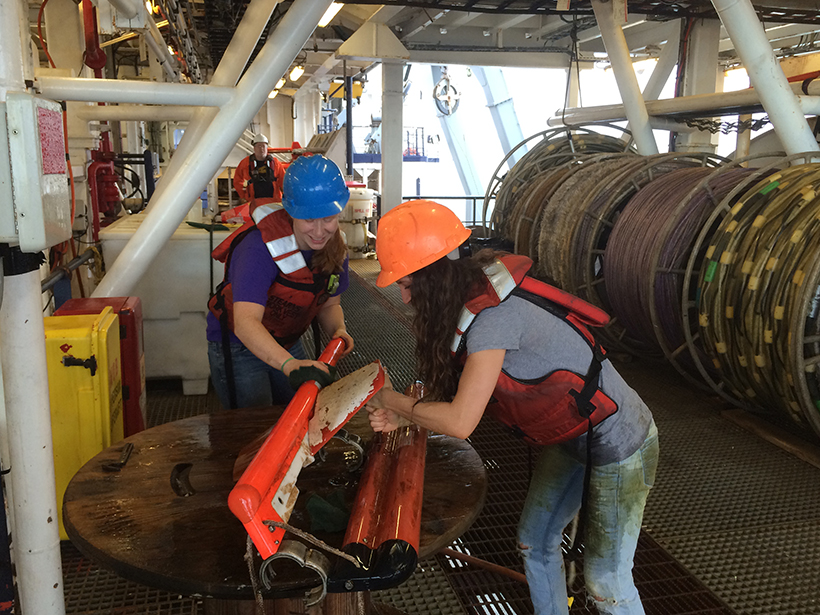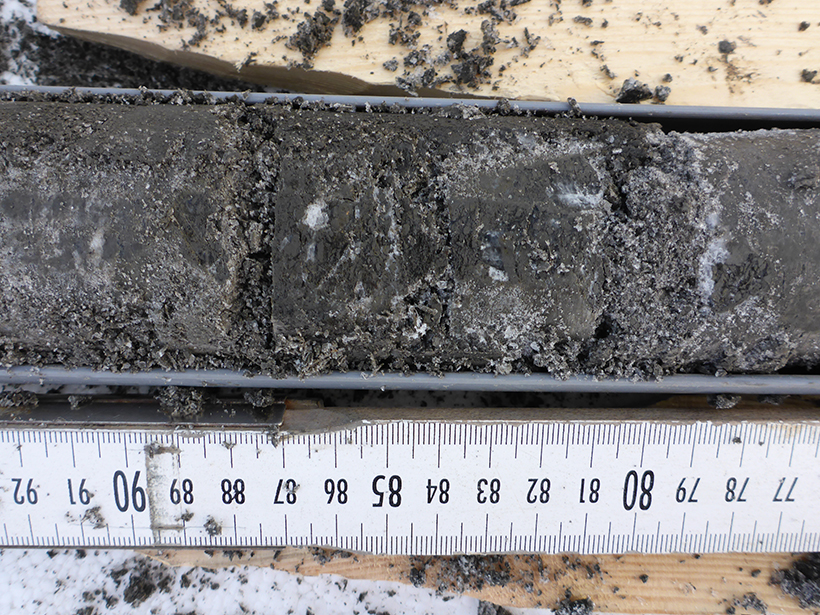The first field measurements of turbidity currents flowing around submarine channel bends indicate spiral flow plays a key role in keeping sediment suspended for hundreds of kilometers.
seafloor
Tracking Deep-Earth Processes from Rapid Topographic Changes
Rapid elevation-rise in Turkey, tracked by marine sediments that now sit at 1.5 km in elevation, is linked to deep-Earth processes that can explain short-lived, extreme rates of topographic change.
How Offshore Groundwater Shapes the Seafloor
The MARCAN project, launched last January, is working to fill a gap in our knowledge of how freshwater flowing underground shapes and alters the continental margins.
Iron Readings Hint That Ocean Depth Influences Seabed Volcanism
Water pressure on mid-ocean ridges may affect magma production kilometers beneath the ocean floor.
Deep-Seabed Mining May Come Soon, Says Head of Governing Group
New regulations could open the door for sustainable mining, says the head of the International Seabed Authority. However, he and others pointed to environmental, financial, and technical challenges.
Sloping Topography and Oceanic Surface Modes
An accurate understanding of the influence of ocean bottom topography helps to diagnose the velocities of subsurface currents.
Seafloor Activity Sheds Light on Plate Tectonics
Scientists in Japan study stress released by oceanic earthquakes in newborn sections of seafloor.
An 1888 Volcanic Collapse Becomes a Benchmark for Tsunami Models
When volcanic mountains slide into the sea, they trigger tsunamis. How big are these waves, and how far away can they do damage? Ritter Island provides some answers.
Keeping Our Focus on the Subseafloor
Hard-pressed funding agencies wonder whether marine seismic facilities are worth the investment. A recent survey gives a resounding yes.
Microbes May Thrive in Subsea Permafrost Long After Flooding
Two cores from the East Siberian Arctic Shelf reveal how microbial communities develop over thousands of years as submarine permafrost slowly thaws.

